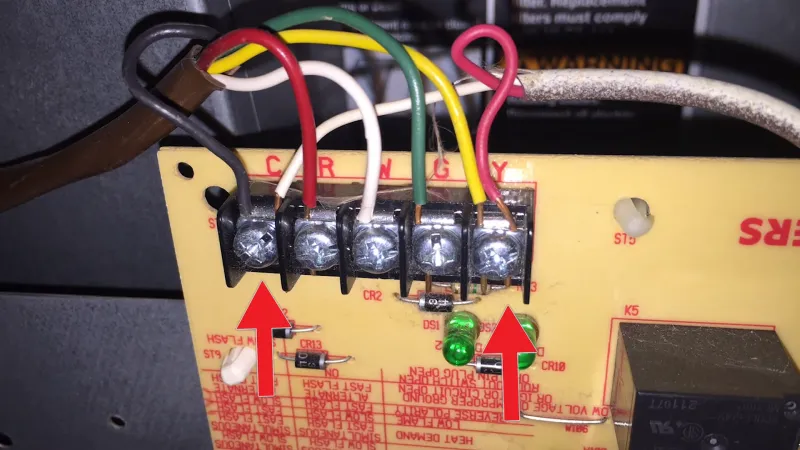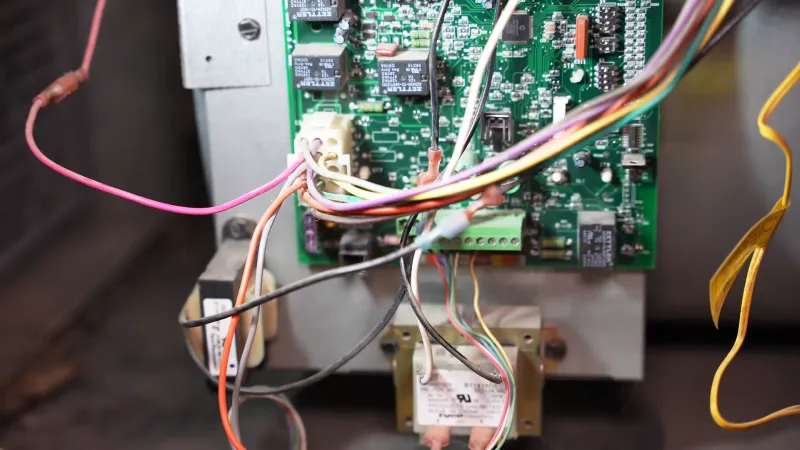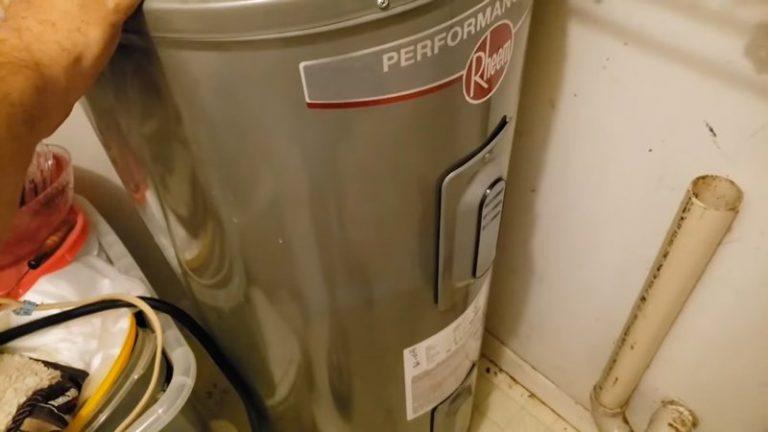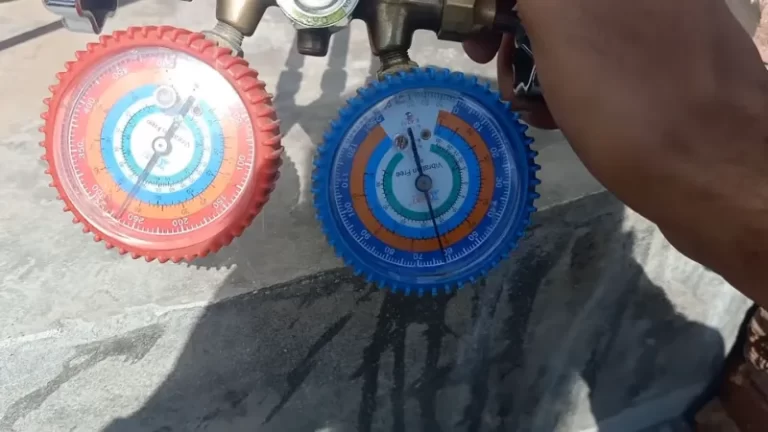No C Terminal on Thermostat – Causes and Fixes

If you’re in the process of installing a new thermostat, you may have noticed that some models require a “C” wire, also known as a common wire, for proper operation. This wire is used to provide a constant power source to the thermostat, which is necessary for certain features such as programmable schedules and remote access.
However, not all thermostats have a “C” terminal, and if you have an older thermostat or a newer model without a “C” terminal, you may be wondering what your options are. In this article, we’ll explore the reasons why a thermostat may not have a “C” terminal and provide some options for dealing with this situation.
You'll Learn About
No C Terminal on Thermostat – is It Wired?
The “C” wire, also known as the common wire, is often used to provide a constant power source to the thermostat. In some cases, older thermostats may not have a “C” terminal because they do not require a constant power source.
In this case, it may be possible that a “C” wire is already in place but left unconnected. If you have a newer thermostat that does require a “C” wire, and you find that there is a wire tucked away behind your old thermostat that is not being used, you can verify if it is the “C” wire by examining the circuit board inside your furnace.

If you have a newer thermostat that requires a “C” wire and you do not have one available, there are a few options you can consider. One option is to install a “C” wire, if possible. This may involve running a new wire from your furnace to your thermostat, which can be a more involved process.
Another option is to use a thermostat with a built-in power supply, such as a thermostat with a battery backup. Some thermostats also offer the ability to use a different wire, such as the “G” wire, as a substitute for the “C” wire.
Finally, you can also consider purchasing a thermostat that does not require a “C” wire, such as a thermostat with a built-in power supply or a thermostat that uses Wi-Fi or another wireless connection.
Reasons for Not Having a “c” Terminal on a Thermostat:
There are a few reasons why a thermostat may not have a “C” terminal.

Do Not Require a Constant Power Source
Some older thermostats may not have a “C” terminal because they do not require a constant power source. These thermostats may use other methods, such as a battery backup, to power certain features or may not offer certain features that require a constant power source.
Built-in Power Supply
Some newer thermostats may not have a “C” terminal because they have a built-in power supply, such as a battery backup. These thermostats can operate without a “C” wire and may not require any additional wiring.
Not Needed for the Specific Model
In some cases, a thermostat may not have a “C” terminal simply because it is not needed for the specific model or the specific heating and cooling system it is intended to be used with. In these cases, the thermostat may still offer certain features that require a constant power source, but it may use a different method, such as a built-in power supply, to provide this power.
Options for Dealing With a Thermostat Without a “c” Terminal:
If you have a thermostat that does not have a “C” terminal, there are a few options you can consider to ensure that your thermostat is properly powered and able to function as intended.
Install a “c” Wire
If possible, you can install a “C” wire by running a new wire from your furnace to your thermostat. This option can be more involved and may require the assistance of a professional, but it is the most reliable way to provide a constant power source to your thermostat.
Use a Thermostat With a Built-in Power Supply
Some thermostats have a built-in power supply, such as a battery backup, which allows them to operate without a “C” wire. These thermostats can be a good option if you do not have a “C” wire available or if you prefer a more convenient installation process.

Use a Different Wire as a Substitute for the “c” Wire
In some cases, it may be possible to use a different wire, such as the “G” wire, as a substitute for the “C” wire. This option can be more complex and may not be compatible with all thermostats, so it is important to carefully review the instructions provided by the manufacturer before attempting this option.
Purchase a Thermostat That Does Not Require a “c” Wire
Finally, you can also consider purchasing a thermostat that does not require a “C” wire, such as a thermostat with a built-in power supply or a thermostat that uses Wi-Fi or another wireless connection. These thermostats can be a good option if you do not have a “C” wire available and want to avoid the hassle of installing a new wire or using a different wire as a substitute.
What to Do if There is No C Terminal on the Thermostat?
Here are a few additional tips that may be helpful if you are dealing with a thermostat that does not have a “C” terminal:
Verify the Compatibility of Your Thermostat With Your Heating and Cooling System
It is important to ensure that your thermostat is compatible with your specific heating and cooling system before attempting to install it. This includes verifying that the thermostat has the necessary connections and features for your system, and that it is compatible with any additional equipment or devices you may be using, such as a humidifier or dehumidifier.
Check for a “c” Wire That May Already Be in Place
If you are replacing an old thermostat with a newer model that requires a “C” wire, it is possible that a “C” wire is already in place but left unconnected. In this case, you may be able to simply connect the “C” wire to your new thermostat rather than installing a new wire.
Consider Using a Thermostat With a Built-in Power Supply
As mentioned earlier, some thermostats have a built-in power supply, such as a battery backup, which allows them to operate without a “C” wire. These thermostats can be a good option if you do not have a “C” wire available or if you prefer a more convenient installation process.
Use a Different Wire as a Substitute for the “c” Wire Only as a Last Resort
If you are unable to install a “C” wire and cannot find a thermostat with a built-in power supply that meets your needs, you may consider using a different wire, such as the “G” wire, as a substitute for the “C” wire. However, it is important to keep in mind that this option can be more complex and may not be compatible with all thermostats. It is best to use this option only as a last resort after all other options have been exhausted.
Don’t Forget to Turn Off Power to Your Heating and Cooling System Before Installing Your Thermostat
It is important to turn off power to your heating and cooling system before attempting to install your thermostat. This will help prevent any accidents or injuries and ensure that the installation process goes smoothly.
Do I Need the C Wire on a Thermostat?
When dealing with a thermostat that does not have a “C” terminal, there are a few things you should know or have on hand to make the process as smooth as possible.
Know the Compatibility Requirements of Your Thermostat
Before attempting to install a thermostat, it is important to verify that it is compatible with your specific heating and cooling system. This includes ensuring that the thermostat has the necessary connections and features for your system and is compatible with any additional equipment or devices you may be using, such as a humidifier or dehumidifier.
Have a Basic Understanding of Wiring
If you are considering installing a “C” wire or using a different wire as a substitute for the “C” wire, it is helpful to have a basic understanding of wiring principles and terminology. This can help you understand the instructions provided by the manufacturer and make it easier to troubleshoot any issues that may arise during the installation process.
Gather the Necessary Tools and Materials
Depending on the specific option you choose, you may need to have certain tools and materials on hand to complete the installation process. This may include wire strippers, wire nuts, electrical tape, and other supplies. It is a good idea to gather these supplies in advance to ensure that you have everything you need.
Follow the Instructions Provided by the Manufacturer
It is important to carefully read and follow the instructions provided by the manufacturer when installing your thermostat. This will help ensure that the installation process goes smoothly and that your thermostat is properly configured and functioning as intended.
Seek Professional Assistance if Needed
If you are not comfortable or confident in your ability to install your thermostat, or if you encounter any issues that you are unable to resolve on your own, it is a good idea to seek professional assistance. A professional HVAC technician or electrician will be able to help you install your thermostat safely and correctly.
Conclusion
If you have a thermostat that does not have a “C” terminal, there are a few options you can consider to ensure that your thermostat is properly powered and able to function as intended.
You can install a “C” wire, use a thermostat with a built-in power supply, use a different wire as a substitute for the “C” wire, or purchase a thermostat that does not require a “C” wire. Each of these options has its own pros and cons, and the best option for you will depend on your specific situation and needs.
It is important to carefully review the instructions provided by the manufacturer and consider the complexity and cost of each option before making a decision. Ultimately, the most important thing is to choose a thermostat that is compatible with your heating and cooling system and meets your needs.
A missing C terminal on your thermostat can prevent it from receiving constant power, leading to operational issues. This is common in older systems or improperly wired setups. To resolve this, you may need to install a C wire or use an adapter. For more electrical troubleshooting tips, explore our guide on Dimchae kimchi refrigerator issues. If you’re dealing with other HVAC concerns, our solutions for Dometic RV refrigerators and Electrolux touch panel problems might be useful.



